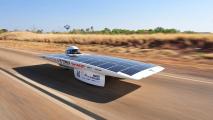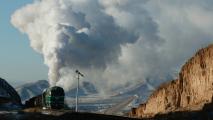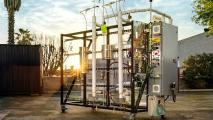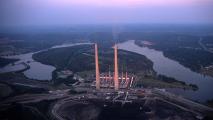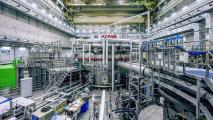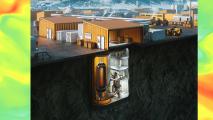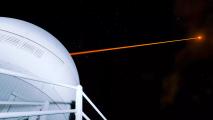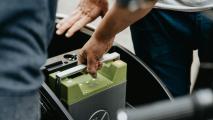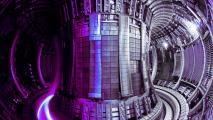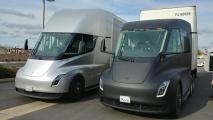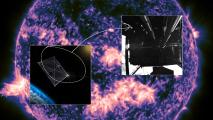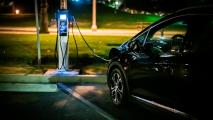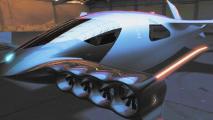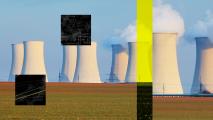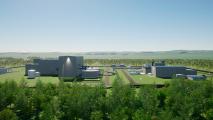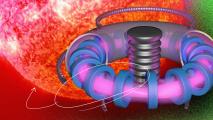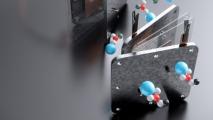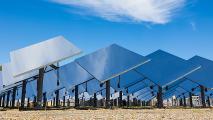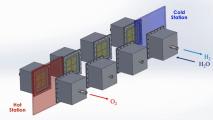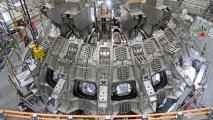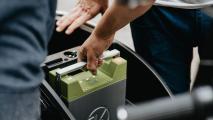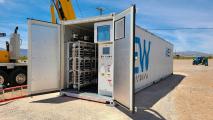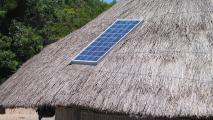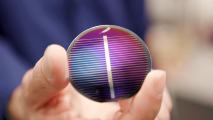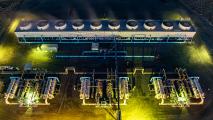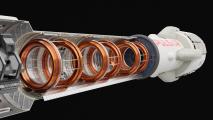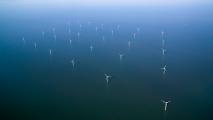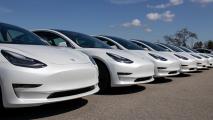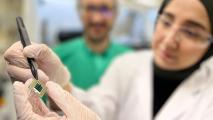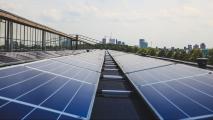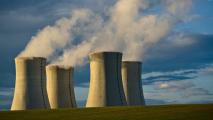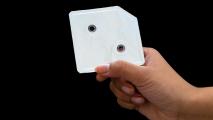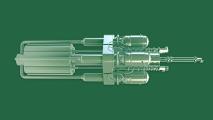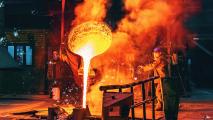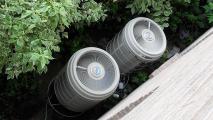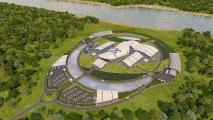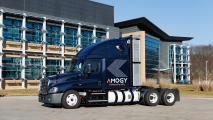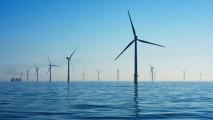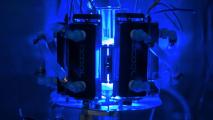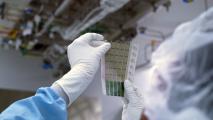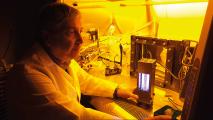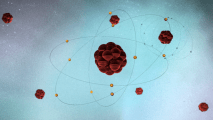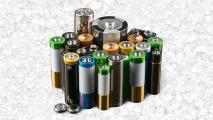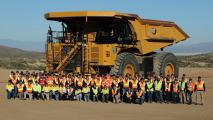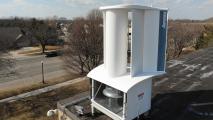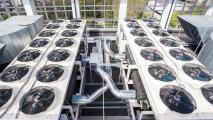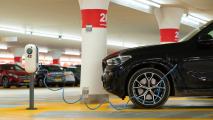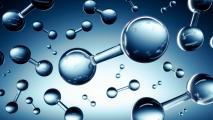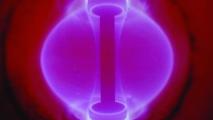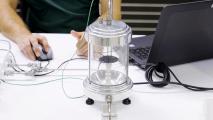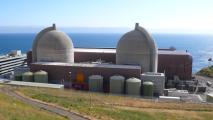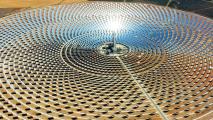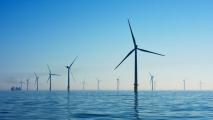Field: Clean Energy
Why aren’t there solar-powered cars?
There are a number of reasons why solar-powered cars aren’t an option for everyday travel, at least not yet.
Why batteries come in so many sizes and shapes
Despite all working the same way, batteries are made in different sizes and shapes for reasons of cost and how easy they are to make.
Even as the fusion era dawns, we’re still in the Steam Age
Why do we use steam rather than other gases? Steam has lasted this long because we have an abundance of water, covering 71% of Earth's surface.
This startup is making natural gas from sunlight, water, and air
Terraform Industries is using sunlight, water, and air to create synthetic natural gas — and keep methane out of the atmosphere.
Retired coal plants can aid the energy transition — by going nuclear
Nuclear power is a proven way to decarbonize the grid, and a lot of infrastructure for it already exists at retired coal plants.
Korea’s “artificial sun” sets nuclear fusion record
An upgrade to KSTAR, an “artificial sun” in Korea, enabled scientists to set a new world record in nuclear fusion.
Nuclear’s role in a net-zero world
Is nuclear power a necessary part of the transition away from fossil fuels? As the debate rages on, new technologies may be shift the balance.
Here’s what it’ll take to power Africa’s clean energy future
The renewable electricity revolution is well underway in Africa, but needs to be shared across borders, this research found.
Startup is building a giant sand battery in Finland
A massive sand battery will help a Finnish town end its reliance on oil for heating, aiding the transition to a clean energy future.
AI solves huge problem holding back fusion power
Princeton researchers have trained an AI to predict and prevent a common problem during nuclear fusion reactions.
Fusion startup plans to shoot space junk with lasers
Japanese startup EX-Fusion plans to test whether lasers it is developing for nuclear fusion can remove space junk from orbit.
How electron beams could jumpstart the nuclear industry
Electron beam welding could accelerate manufacturing of small modular reactors, helping make nuclear power a part of our clean energy future.
Mega solar farms could make it rain in deserts
A new study suggests that gigantic solar farms could be used to create “heat islands” that make rain locally.
Cobalt-free batteries could power cars of the future
A new lithium-ion battery that includes a cathode based on organic materials could offer a more sustainable way to power electric cars.
Fusion reactor break world record in final experiment
The JET tokamak set a new world record for generating energy from nuclear fusion during its final experiment.
Battery electric trucks offer emission cuts of 75-85% over their entire life cycle
A civil and environment engineer weighs in on whether electric trucks are our best bet to cut road transport emissions.
NASA lays out the path to space-based solar power
A NASA study found that space-based solar power is likely far too expensive, but it also details what would need to happen to make it work.
Are EVs really cheaper to own? It all depends on the model.
While electric vehicles (EVs) have higher upfront costs, some claim they are cheaper over their lifetimes due to lower fuel and maintenance costs.
Swiss startup unveils the world’s first hydrogen VTOL jet
Swiss startup Sirius Aviation has unveiled a hydrogen VTOL it says could carry three passengers more than 1,000 miles without refueling.
Microsoft AI discovers 18 new battery materials in two weeks
Using AI and cloud computing, Microsoft was able to quickly identify 18 promising battery materials for the Department of Energy.
Gallium: The liquid metal that could transform soft electronics
By harnessing the unusual properties of a liquid metal called gallium, scientists could create a new generation of flexible devices.
Microsoft is training an AI to help get nuclear reactors approved
Microsoft is training an AI to generate the paperwork needed to get next-gen nuclear reactors approved by regulators.
How TerraPower is leading the nuclear renaissance
Bill Gates’ TerraPower startup is building a next-generation nuclear power plant that could revive the declining industry.
Pursuing fusion power
Many researchers now believe that within the next few decades, power plants will provide carbon-free electricity from thermonuclear fusion.
Engineers develop an efficient process to make fuel from carbon dioxide
MIT engineers developed a process that directly converts carbon dioxide into formate, a solid fuel that can be stored indefinitely.
Aussie scientists hit milestone in concentrated solar power
A breakthrough at a concentrated solar power facility in Australia could help make solar a more reliable source of energy in the future.
MIT design would harness 40 percent of the sun’s heat to produce clean hydrogen fuel
Engineers hope to produce totally green, carbon-free hydrogen fuel with a new, train-like system of reactors driven by the sun.
Japan sets new nuclear fusion record
A massive nuclear fusion experiment just hit a major milestone, potentially putting us a little closer to a future of limitless clean energy.
What causes lithium-ion battery fires? Why are they so intense? And how should they be fought?
When a lithium-ion battery fire breaks out, the damage can be extensive. These fires are intense, long-lasting, and hard to fight.
Study: ancient technique holds thousands of tons of carbon, sequestered over centuries
"Dark earth" holds thousands of tons of carbon, sequestered over centuries by indigenous practices, a new study suggests.
California utility will try to store renewable energy in iron-flow batteries
A California utility company is testing whether iron-flow batteries could be the answer to the renewable energy storage problem.
Reflecting sunlight to cool the planet will cause other global changes
MIT researchers find that extratropical storm tracks would change significantly with solar geoengineering efforts.
MIT students develop energy “mini-grid” software for remote & mountainous areas
MIT Energy Initiative spinoff Waya Energy helps countries work toward universal, cheap access to electricity.
Can we burn metal for heat, instead of fossil fuels?
Researchers are looking at ways of boosting the efficiency of burning iron so that the metal can be used as an alternative energy source.
NASA gives Blue Origin $35 million to turn moon dust into solar cells
A technology that autonomously fabricates solar cells out of lunar regolith just earned Blue Origin a $35 million NASA contract.
Google-backed startup sets two world records in geothermal power
Google-backed startup Fervo Energy has successfully tested a record-breaking enhanced geothermal system in Nevada.
Crab shells boost the lifespan of zinc-ion batteries
A zinc-ion battery containing crab shells could serve as the foundation for future renewable energy storage systems.
Innovation chief says “pressure test” your pet hypothesis. It’s guaranteed to be wrong.
His grandfather, a member of Oppenheimer’s atomic bomb team, foresaw the potential of nuclear energy to power cities – not destroy them. Today, Astro Teller is on a mission to harness innovation for good. Here’s how he’s doing it.
A fusion rocket designed to travel 500,000 mph is under construction
British startup Puslar Fusion is developing a fusion rocket it says will travel 500,000 mph, expanding our reach throughout the solar system.
The world needs hundreds of thousands more offshore wind turbines – where will they all go?
The huge expansion of offshore wind farms required to meet net zero targets may be achievable, if we can find the right place to put them.
Using electric water heaters to store energy could do the work of 2 million home batteries
As we work towards fully electric households, have we overlooked a key enabling technology, the humble electric water heater?
Tesla Superchargers will soon work with Ford and GM EVs
Ford and GM vehicles will be able to use the 12,000 Superchargers in early 2024, helping potentially set a new charging standard.
Why EV growth in US could be much faster than expected
Consumer preferences and technological trends suggest that most buyers will be ready to choose an EV by 2030.
New “tandem” solar cell breaks world record
A new tandem solar cell containing layers of silicon and perovskite has demonstrated an unprecedented efficiency of 33.7%.
These 4 charts show the unstoppable growth of solar
Solar is growing fast enough to displace fossil fuels from the entire global economy before 2050, but infrastructure needs to keep up.
Westinghouse’s small nuclear reactor could power the future
Westinghouse Electric Company has unveiled a small nuclear reactor based on the same tech as a larger reactor already in operation.
Shutting down nuclear power could increase air pollution
If nuclear reactors are retired, polluting energy sources that fill the gap could cause more than 5,000 premature deaths.
New battery tech boosts EV range by 20%
A new silicon anode material for EV batteries can boost a vehicle’s range by 20% while cutting down on charging times.
New lithium recycling method is cleaner and cheaper
A cheaper, cleaner lithium recycling method could help ensure we have enough of the valuable metal to power the clean energy future.
The ocean “twilight zone” could store vast amounts of carbon captured from the atmosphere
There may be ways to enhance natural processes so the ocean pulls more carbon out of the atmosphere to help slow climate change.
Self-sufficient “microgrids” could save you from power grid emergencies
Centralized power systems rely on large power plants and transmission grids, but microgrids are self-sufficient.
Batteries not included: How your own body could power wearables
Batteries are the weak link for wearable and implantable devices. But what if you could harvest energy from the heat, sweat or vibrations of the wearer?
These 3D-printed batteries could be the future of clean energy
Silicon Valley startup Sakuu has developed a 3D-printing platform that it says can mass produce solid-state batteries, in any shape and size
These “microreactors” could be the future of nuclear power
Microreactors that can be built and deployed much faster than traditional nuclear power plants could be the future of nuclear energy
John Deere unveils quieter, electric riding mowers
John Deere is entering the electric market with models aimed at homeowners and the golf industry.
World’s largest electric cargo plane can carry up to 400 pounds
The Pelican is an autonomous electric cargo plane capable of transporting 400 pounds of cargo 200 miles in less than three hours.
Could hydrogen-fuelled flights be a reality by 2035?
By 2035, hydrogen fuel cells could be used to electrify mid-range flights and hydrogen combustion aircraft could be used on long-haul flights.
How heat pumps of the 1800s are becoming the technology of the future
With ever-improving efficiencies, and rising sales in multiple countries, heat pumps are only getting harder for their detractors to dismiss.
First small modular nuclear reactor certified in US
The US’s first certification of a small modular reactor design could lead to cheaper, safer nuclear power plants.
MIT grads unveil the world’s first ammonia-powered semi truck
Amogy, a startup founded by four MIT grads, has unveiled an ammonia-powered semi truck that can be refueled in just eight minutes.
This MIT research could help us unlock smaller, lighter, and safer batteries
Replacing the liquid electrolyte in rechargeable lithium batteries with a thinner, lighter ceramic material could revolutionize technology.
This Swedish start-up is building an electric airliner
A Swedish startup has joined the race to build the world’s first electric airplane to help reduce the carbon impact of flying.
How do floating wind turbines work?
Several full-scale demonstration projects with floating wind turbines are already operating in Europe and Asia. How do they stay afloat?
The mail is finally going electric (its trucks, anyway)
After withering criticism from the EPA, Biden officials, and 16 states, the USPS has announced it will order more electric delivery vehicles.
New experiment produces hydrogen with LEDs
Quantum simulations have identified a cheap way of extracting hydrogen fuel from liquid ammonia using LED light.
Paper-thin solar cell can turn any surface into a power source
MIT researchers have developed a scalable fabrication technique to produce ultrathin solar cells that can be stuck onto any surface.
Seven science and tech breakthroughs you may have missed this year
A roundup of major science and tech achievements that flew under the radar in 2022, including new vaccines, advanced solar cells, and more.
After 50 years, fusion power hits a major milestone
Researchers in California achieved net energy gain in a thermonuclear fusion experiment. But how great of a breakthrough is this, really?
New battery is cheaper than lithium-ion with four times the capacity
A new type of room temperature sodium-sulfur (RT Na-S) battery could help solve the renewable energy storage problem.
Here’s what that fusion power breakthrough really means
This year, NIF reports that it has achieved "ignition" — that is, it has achieved slightly more fusion energy output than laser energy input.
Construction juggernaut unveils huge electric mining truck
Construction equipment manufacturer Caterpillar has demonstrated its first battery-electric large mining truck.
This meteorite material could power our clean energy future
A lab-made version of tetrataenite, a mineral found in meteorites, could replace rare earth elements in the production of permanent magnets.
Your house could become a rechargeable cement battery. Here’s how.
Rechargeable cement batteries could allow for whole sections of multi-storey buildings to be made of functional concrete.
Molten salt reactors could save nuclear power
Molten salt reactors, a type of nuclear reactor first explored in the 1950s, could be the future of clean energy.
New motionless tech harnesses wind energy from rooftops
Aeromine Technologies’ motionless wind energy system promises to increase the amount of renewable energy generated from rooftops.
New MIT system could cool buildings up to 10℃— without electricity
MIT’s new “passive cooling” system could break the spiral of more air conditioning.
Stanford engineers warn that electric car charging could crash a grid powered by renewable energy
Most electric car charging is done at night. A grid powered mostly by renewable energy might not be able to meet demand.
Electric planes are coming: Short-hop regional flights could be running on batteries in a few years
Aerospace engineer Gökçin Çınar discusses sustainable aviation concepts, including hybrid-electric planes and hydrogen fuel alternatives.
China has discovered a brand new moon mineral
A new moon mineral discovered by China contains helium-3, an element that could one day fuel nuclear fusion reactors on Earth.
Air Canada orders 30 electric-hybrid aircraft for takeoff in 2028
Flag carrier Air Canada has announced plans to have electric-hybrid planes on regional and commuter routes by 2028.
Brick batteries may be a key to decarbonizing heavy industry
By storing renewable energy as heat in brick “batteries,” Rondo Energy believes they can decarbonize heavy industry.
The surprising history of how electric vehicles have played the long game and won
The electric vehicle’s environmental credentials might give them a final push to win the long game over traditional cars.
This startup wants to build a radically powerful new kind of wind turbine
Norwegian startup World Wide Wind wants to build offshore wind turbines based on a completely different design from traditional models.
This rock-bending tech may change clean energy
A technology that stores energy underground could make enhanced geothermal systems more cost competitive.
1.7 billion years ago, Earth had a natural nuclear reactor
Seventeen natural sites possessing ancient nuclear reactions have now been found: evidence of Earth's first nuclear reactor.
Heat pumps can cut your energy costs by up to 90%
Heat pumps are becoming all the rage around a world that has to slash carbon emissions rapidly while cutting energy costs.
Wave energy generator passes 10-month test at sea
A wave energy generator has completed a ten month open ocean trial.
New solar device can pull hydrogen straight from the air
Researchers have created a solar-powered device that can pull water from the air to create hydrogen.
Powerful new magnets bring fusion power a step closer
A new system for generating magnetic fields suitable for spherical tokamaks is fueling progress on nuclear fusion.
Today’s coal plants could be converted to run on clean hydrogen
Australian startup Star Scientific has developed a tech it says makes it easy to use hydrogen fuel at existing coal-fired power plants.
Researchers have found a way to pull more than 95% of uranium from seawater
Seawater contains millions of tons of uranium, but it’s too expensive to extract. A new material may change that.
Nuclear power might not be dead in California
California is considering a $1.4 billion plan to delay the retirement of Diablo Canyon, its last nuclear power plant.
Gates-backed company is using robots to build mega solar farms
With new capital from a Bill Gates-backed VC firm, Terabase wants to automate solar farm construction.
Next US energy boom could be wind power in the Gulf of Mexico
Wind power on land has seen remarkable growth in the U.S. over the last 15 years, including in Texas. Is offshore wind next?
Swiss team sets new world record for solar power
Swiss researchers have developed two perovskite-on-silicon solar cells that are more efficient than previously thought possible.
Transparent solar panels could soon turn windows into energy harvesters
A new solar panel design can efficiently convert light into electricity, while still allowing almost 80% of incoming light to pass straight through.
You can ride this “flying” electric ferry in 2023
Stockholm is piloting a “flying” electric ferry that’s expected to cut commute times in half and make public transportation more sustainable.
NASA is closer than ever to generating nuclear power on the moon
NASA has given three companies $5 million contracts to develop mini reactors capable of generating nuclear power on the moon by 2031.
